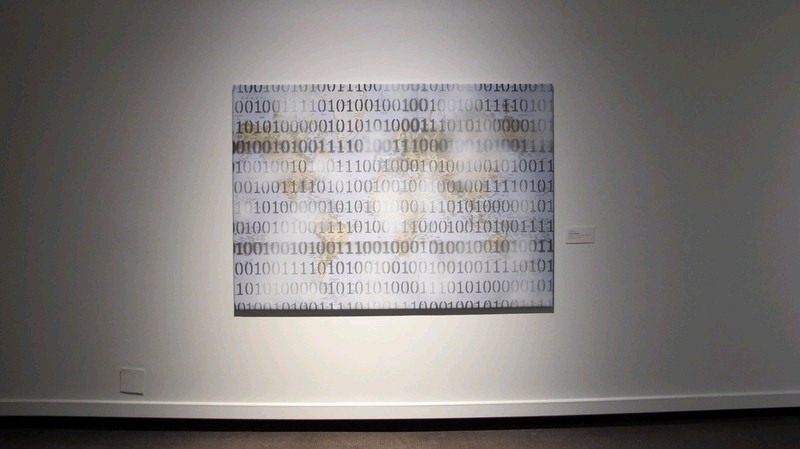IAIN BAXTER&: Information / Location, North Vancouver
Posted: June 8, 2012IAIN BAXTER&:
Information / Location,
North Vancouver
______________________________________________________________________
Fieldwork and Observations
______________________________________________________________________
Real Art is real Art. There is no ancient and modern. The difference
between the two is not in art itself, but lies in environment, in our
point of view, and in the angle from which we see life.
- Emily Carr (1935)
The sentence, “Everyone is an Artist,” simply means to point out
that the human being is a creative being, that he is a creator, and
what’s more, that he can be productive in a great many ways.
To me, it’s irrelevant whether a product comes from a painter,
from a sculptor or from a physicist.
- Joseph Beuys (1970)
We live in a natural landscape and a landscape of information, and it is the fusion vs. the confusion of these landscapes that excites and informs my practice.
- IAIN BAXTER& (2012)
By simultaneously addressing an artist’s early and current work, IAIN BAXTER&: Information/Location, North Vancouver (a multi-site exhibition) locates itself as an immanent source of projection and reception — an open (intermediary) channel of communication between creativity and crisis. Accordingly, this curatorial project entails four sites and four dimensions:
1) a temporary,
research-oriented exhibition gallery;
1.1) a semi-permanent,
collections-based display facility
(jointly located within a museum of social history);
2) a regional archive, forming part of a
localized “community history” centre;
3) a broadly planted “edible garden”
devoted to practical/educational
(not-for-profit) production and local
marketing of organically raised vegetables;
4.) a public library that defines itself as
both “community meeting place and
gateway to knowledge” while emphasizing
a programme of “life-long learning, literacy
and cultural diversity.”
Connecting these sites – new places of production for an artist – is the future-bearing perspective of the exhibition itself. [See poster, below.]. Specifically, as BAXTER& notes of his career over the past forty-seven years: “… I have been producing and exhibiting (nationally and internationally) art that focuses on and critiques: Art, Media and Information systems, Corporate, Consumer, and Popular Culture, the Rural vs. The Urban, Technology vs.Humans and Nature, Global Ecological Concerns, and the Landscape in the broadest of Ways, as well as Visual Perception in general.”
______________________________________________________________________
CURATORIAL COMMENTARY
(1.) “A World of Information” (Digital Code Conversion Series), world map and acrylic paint, 58 in. X 82 in., 2012.
“A map, as defined by cartographers, is a representation of the surface of the earth, or any part of it, drawn on a flat surface, and the positions of countries, kingdoms, states, mountains, rivers.We use road maps to find our way about and atlases to locate faraway places we read about in the news. In short, they serve the rather limited andgenerally benign purpose of helping us orient ourselves geographically. Yet maps, to indigenous peoples around the world, resonate with a dark ferocity and foreboding. For five centuries, maps were used to codify, to justify and to sanction an often bloody – and always cruel – colonization of the New World. Maps almost were used as instruments of empire, human constructs imposed as a means of converting chunks of the earth’s surface into real estate, bought and sold by non-aboriginal people.”
- Thomas R. Berger
(2.) Cultural Coordinates:
| mu’ta7 [Lil’wat7u’l] | and (again) | i’kwi [Squamish] | and |
(since time immemorial).
[ Salishan Linguistic Territories (Coastal / Interior).]
“At the beginning of humanity’s time on Earth, there were not so many people, and nature seemed vast and endlessly self-renewing. But today, as we clear the forests, eliminate species, and dump our waste and toxic material into the air, water and soil, we are undermining the productivity of nature itself. For the first time we have to ask, “What is the collective impact of 6.7 billion human beings living on the planet?”
- Tara Cullis and David Suzuki
(3.) Exhibition poster. [Design: Robert R. Reid. Photography: M. Cynog Evans.]
Image: small-scale replica of Charles Marega sculpture (1936) for south approach to Lions Gate Bridge (1938, Vancouver), accompanied by a version of IAIN BAXTER&’s “Animal Preserve” (2011).
![Exhibition poster. [Design: Robert R. Reid. Photography: M. Cynog Evans.] Image: small-scale replica of Charles Marega sculpture (1936) for south approach to Lions Gate Bridge (1938, Vancouver), accompanied by a version of IAIN BAXTER&’s Animal Preserve (2011).](images/poster-jpg3.jpg)
CAUSA / Collective for Advanced and Unified Studies in the Visual Art
June 7, 2012
